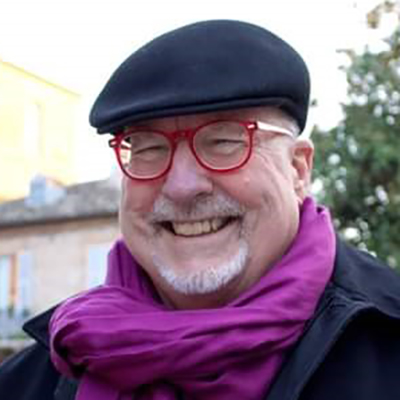Not Quite Ready For Retirement

Almost exactly seven years ago, I experienced two major life-changing events.
First I required emergency surgery for a serious and sudden health issue. Then, shortly after I recovered, I received the type of news from my workplace that instantly caused an employee emotional angst: "The company has decided to go another direction. And we are no longer needing your skillsets." This, after almost two decades of working there and building a whole new market sector. Many professional planners know that moment — a convergence of panic, helplessness, and loss — whether the bad news is from a business or an agency.
Worse, I was 68, only two years from retiring. But I was not ready to retire yet, personally or professionally. I was confronted with the classic dilemma. At that age, who would hire me? After all, most companies and agencies are looking for younger members, both because of lower salary expectations and because of the knowledge that they are investing in a mutually beneficial future. Neither would be the case here.
As I contemplated what to do, I realized that I had two potentially valuable attributes. First a reputation. Many people knew what I did through my interactions with local governments, organizations, and civic associations. Second, I had connections. In the parlance of employment counselors, this was the result of years of "networking."
So, I started calling friends and associates. Most lead to little to suggest other than to wish me good luck. But one suggested calling another colleague who might help. He then suggested calling yet another acquaintance in a large local agency. I can still recall the question he asked me. "How soon can you get here for an interview?"
Half-time Job, Double the Learning Opportunities
He explained they were looking for someone at that very moment to fill an unexpected vacancy in the senior management team. They seemed to like the idea that I would be there for only two years until I retired. The hitch was that it was half-time, as it was a job-sharing situation. Frankly, I had never contemplated such an arrangement. But here it was, along with benefits. I was offered the position. It turned out to be a great place to work, in fact, with high-energy, supportive people. More on that later.

Mark Hinshaw, FAICP. Photo Sunny Savina Bertollini.
So now I have a job. But only half-time. Next, I approached a consulting firm in another city that I knew well from having teamed with them occasionally and competing with them at other times for projects. I crafted a 'pitch.' I said, "What If I worked for you half-time for two years?" I proposed to bring in enough work to cover my pay and, hopefully, more. I simply wanted to be in a collaborative workplace. Further, I offered to help them open an office in my city, given that I could bring them my knowledge of people, competing firms, and clients. They bought the idea.
So now I have two half-time jobs. It was enormously stimulating to have to shift thought processes every other day, from the public sector to the private sector. Each position had very different responsibilities; it was necessary to keep everything going well in each position. It wasn't always easy. But I found the situation invigorating. Both learning new things and juggling multiple balls. If a planner learns anything after working for many years, it's precisely that.
Supportive Surprise at the Agency
Back to the agency with supportive staff.
Soon after I arrived, the assistant director called me into her office and closed the door. Instantly I recalled the dread of being in the vice principal's office back in high school. It's usually not a good thing. I was prepared for a stern lecture about something.
Instead, she completely surprised me. She said they hired me to "shake them up." To get them to be more creative. To develop innovative projects. She said, come to us with any ideas and if we approve, you will get our support. I was dumbfounded. But took on the charge. Within a few months, I secured a grant from a foundation for $700,000, which has since been doubled. I also set in motion actions to create a large urban farm on excess freeway right-of-way land that had been vacant for decades. The farm is fully in use today, operated by a non-profit community organization.
Not such a bad way of wrapping up a 40-year career in urban planning.
Top image: iStock / Getty Images Plus


